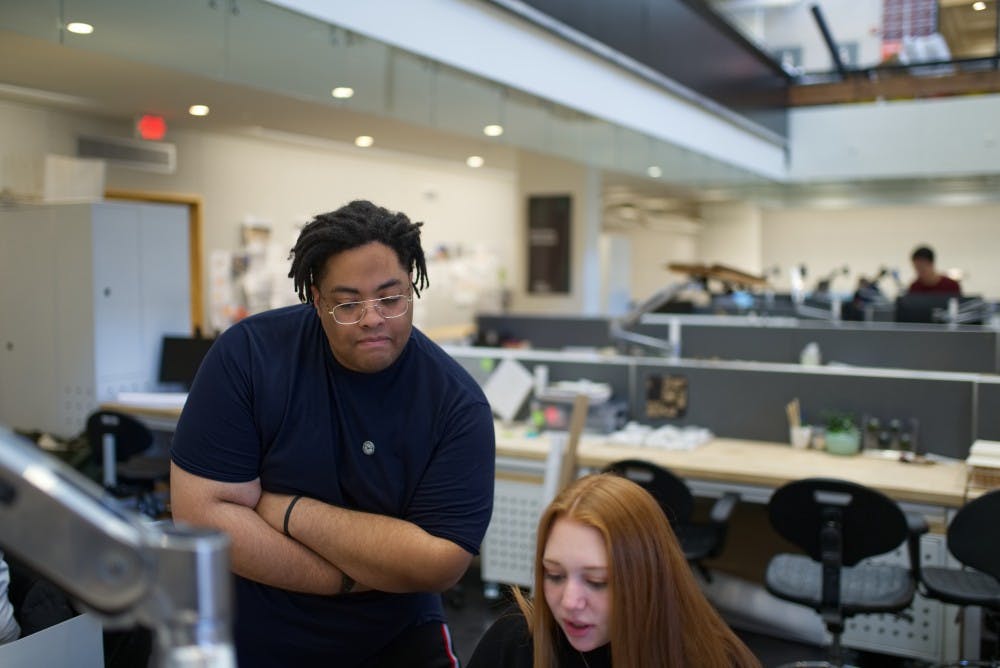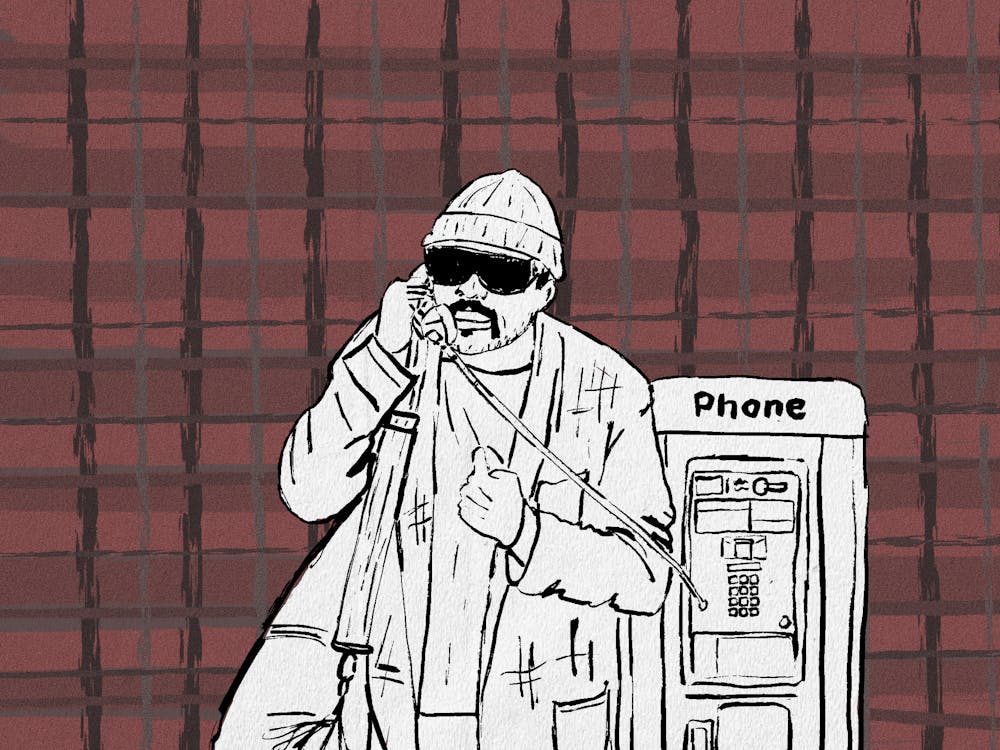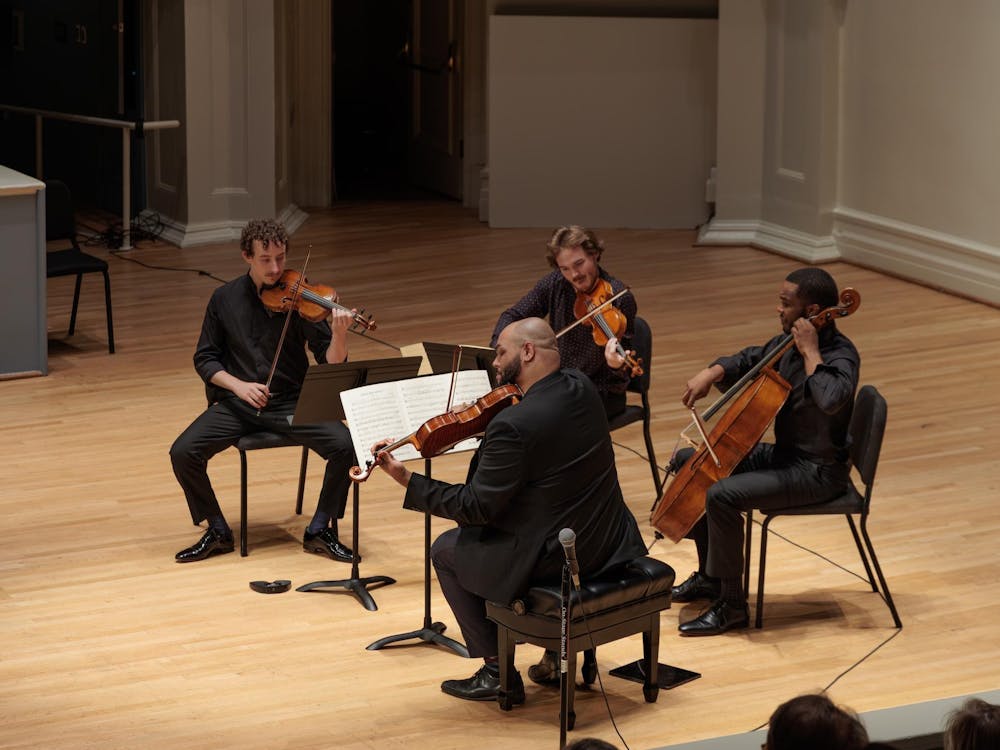In celebration of Martin Luther King Jr.’s 90th birthday, the University’s School of Architecture is hosting “In the Mindset of Martin,” an exhibition in Campbell Hall showcasing the work of both graduate and undergraduate teams tasked with designing and building community spaces in the inclusive spirit of King. Before the exhibition opened, Arts and Entertainment sat down with Arthur Brown, fourth-year Architecture student and the president of the University’s National Organization of Minority Architecture Students chapter.
Brown led a team of undergraduate students last year in a nationally held contest to design an environmentally sustainable, community-oriented train station for Chicago’s Woodlawn district, the destination of the soon-to-be-opened Obama Presidential Center. The design concept came to be known as Sapling Station.
Brown discussed the inspiration from MLK on the project, the benefits of diversity and minority voices in design, the difficult balance of accommodating complex urban issues like gentrification and the unique perspective being a minority design team in Charlottesville has on the team’s mindset.
The following interview has been edited for length and clarity.
Arts and Entertainment: What makes architecture and designing spaces a field where you think diversity should be embraced?
Arthur Brown: We historically have not catered to minorities too well. And we as architects and designers design for everyone and we should not be exclusive in that we should consider the needs of minorities, marginalized groups, women, children, people with disabilities because everyone is affected by what we do.
AE: And how does the Sapling Station project fit into that?
AB: So we first consider our location and our position in the Woodlawn neighborhood of Chicago ... we need to have housing, a community center where people can come and learn, and we have places where small businesses can open up and again bring back or help to promote that renaissance that Woodlawn is trying to promote, as well as create housing there that is not seen as an afterthought but as an integral part of the design.
AE: What makes [the exhibit] unique for this year? How does Sapling Station kind of fit into these design principles? How does that connect to Martin Luther King?
AB: Sapling Station sits at an intersection of a bunch of different things and quite literal intersection of the L train and the axis of the Presidential Obama Center. We were told that we should think of it as a gateway, which is what Martin Luther King Jr. was, definitely like a firebrand. He opened up so many gates for minorities — not just black people all minorities in the sense that black civil rights [were] the onset [for] a bunch of different groups in America to say, "Hey, we're done being like second-hand citizens. We're going to start advocating for ourselves and we're going to be treated like the everyday American." So, I want to say that Sapling Station like before is the continuation of the Woodlawn Renaissance. It's also a continuation of that idea that you do not need to be marginalized in order to enjoy luxury.
AE: Do you think [the complex history of Charlottesville] gives [your team] an advantage, or is that a challenge? What kind of unique perspective does that give you that like other teams might not have in their design concepts?
AB: Yeah, I definitely think that's an advantage. I mean as horrible as it is, there are people who just will not experience what we've experienced here. And although it is horrible and a lot to take in as someone who is still developing mentally and like finding out who they are — I'm not just speaking for myself, I'm speaking for everyone, like in the University at large — it helps to see and understand what the worst possibility is, you know, to an extent. … But I do think it does give us some sort of insight on what is the most negative response you could get to this, or what is, what can we do to keep people safe? What can we do to show that we are better than that kind of response? I think we we definitely have learnt a lot from being in Charlottesville.
AE: What's it like to be a part of [this exhibition], to have your team and the work you've done for months being displayed here with that theme?
AB: I think it's amazing. Like, far too often as an undergraduate student you kind of feel overlooked because of the graduate students in their work, but to be acknowledged for what you've done — even if we weren't the ones to win the competition, we still did pretty well, we got a lot of great feedback from what we did do and I feel so honored and so taken aback that we are being seen and we are being acknowledged for it because yeah, it took a lot of time and effort.
AE: In the future years [of the University], what do you think the main shift in perspective is going to be? Especially on issues like this where there is still very much relevant today — issues of race, issues of diversity and topics like that?
AB: I think we need to walk into things with an open mind that this is always going to be a discussion. … I also think that it is imperative to have these discussions in the classroom. Far too often do we talk about issues of gentrification in the architecture school without explicitly saying that or what's the implications of that or the consequences. I think it is important for us to stop thinking of things hypothetically and start talking about what is actually happening or what has happened historically and what were the effects. I think it's especially important because if we don't do that people will not understand what the reality of it is, especially in America today. There are a lot of students who [think] things like this don't affect [them] ... on a major level. But I don't think that that excuses the lack of education on these topics.
In the Mindset of Martin and featured displays from the Sapling Station concept will be on display through Feb. 1 in Campbell Hall.







